#and off of hospitals
Text
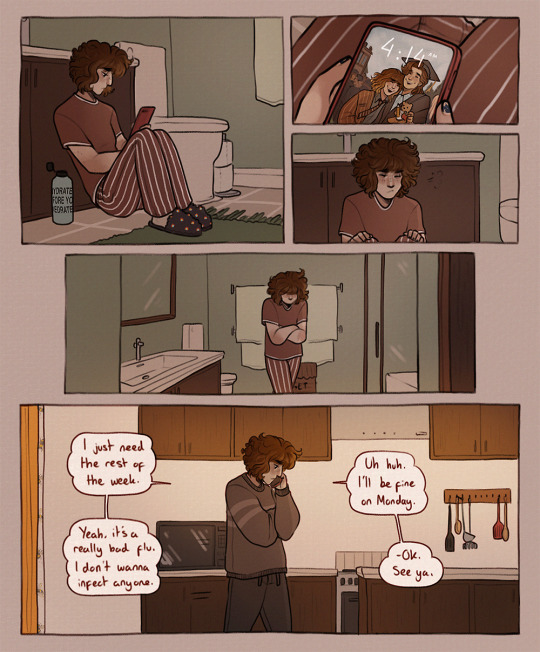
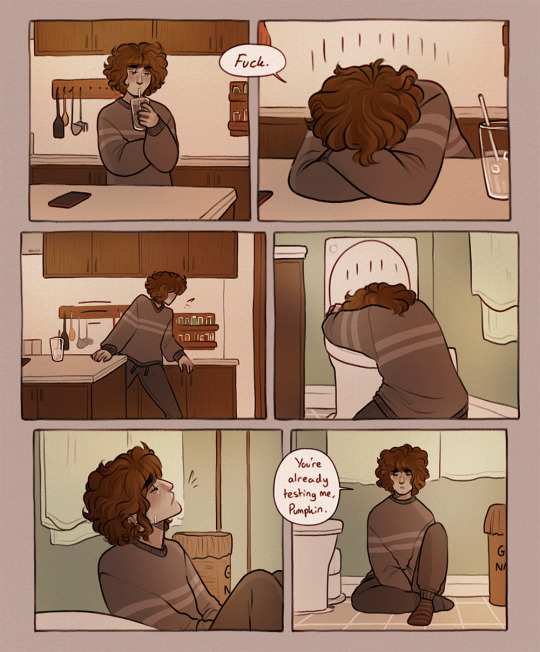
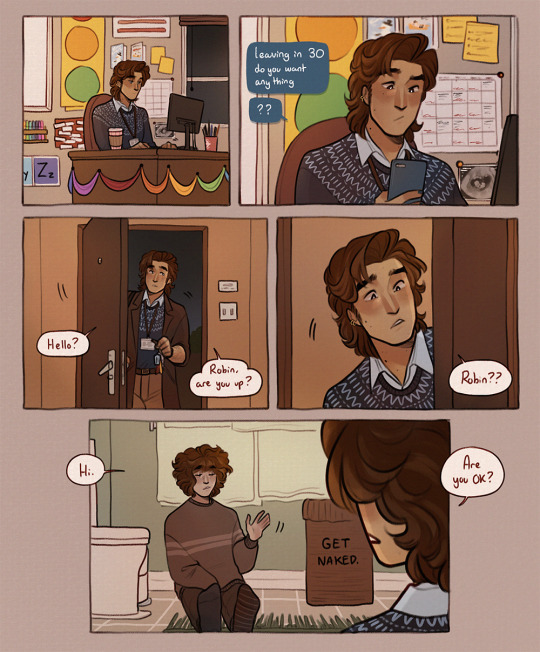
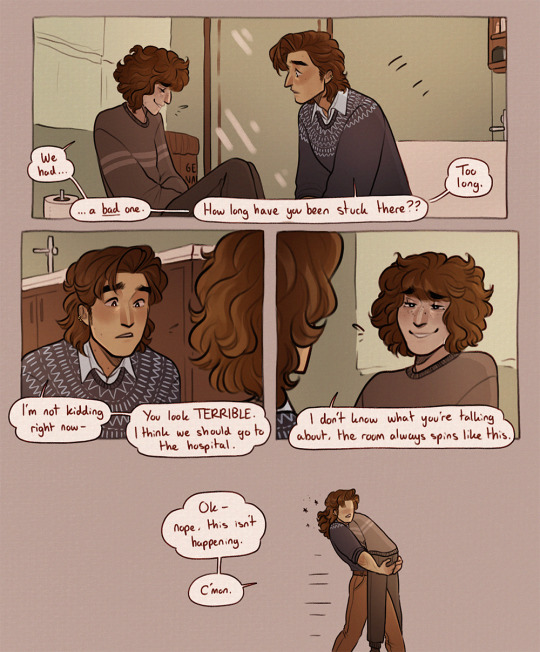
mombin pt 7 <33
(1)(2)(3)(4)(5)(6)
#stranger things#mombin#platonic stobin#steve harrington#robin buckley#cw pregnancy#tw emetophobia#rip robin#you know it's bad when steve 'it's not broken just walk it off' harrington has to drag you to the hospital#idk about anyone else but when i haven't slept or i'm really dehydrated it's like i'm drunk
1K notes
·
View notes
Text

Brothers and their Lovers
#omori#omori fanart#omori kel#omori hero#omori sunny#omori mari#omori sunkel#omori suntan#omori heromari#hello omori fandom i've come with some food :)#omori bad ending#this takes place after Sunny jumped off the hospital building#wonder if someone would understand the symbolism of how the arms around suzuki siblings signify something#... their deaths maybe?
2K notes
·
View notes
Text
i so badly want one of those fic examinations of steve's relationship with joyce and hopper but solely through eddie's pov like hear me out
steve and eddie chat a lot in the upside down (and later in the hospital, when they learn hop is alive). steve has taken charge of filling eddie in on the rest of their of-age crew without the kids butting in. he never mentions his own parents, but he talks about the rest of the party's a lot, especially joyce and hopper. eddie knows what it's like to desperately want someone to be your parent and trying to hide it from his own childhood, when he would try to be cool about wayne dropping him off at his dad's house. steve obviously adores joyce and hopper, thinks the world of them and legitimately looks up to them.
eddie isn't sure what he expects from a cop who came back to life and the world's most determined housewife, but he's excited to meet them as someone steve loves.
cue eddie's horror when he realizes that neither of them really feel much for steve rather than annoyance and vague distrust. that joyce trusts will with eddie, an accused murderer, in a heartbeat and still hesitates to leave him with steve. that hopper brushes off every ounce of steve's hero worship and joy.
he tries to broach the topic with steve, gently, and is heartbroken when steve genuinely has no idea what he's talking about. and not because he's oblivious, but because steve thinks that's what he deserves. he thinks that's the parental love that someone who was an asshole in high school needs, because that's what would make him a good person. he needs people to call him out constantly, obviously, because why else would they keep doing it? why would nancy? at least they're here. at least they're not ignoring him. at least they're not forcing him into a box. they just want him to be better.
like, this is the man who thanked a girl for calling him bullshit and telling him she never loved him. he doesn't Know that's not how you're supposed to handle things. no one ever taught him that.
and now eddie's gotta figure out how he can teach steve how to be loved the right way without outing himself and his huge crush on his love-starved dork of a friend.
#shut up az#steddie#i just had the flash of eddie in a hospital bed staring up at hopper and the way he talks to steve in horror#like hopper saying something off the cuff about how he's not surprised there was so much collateral with steve in charge#and eddie thinking about steve always putting himself in harm's way#and the way steve got mauled by bats way before eddie did and then KEPT. GOING. but no one is mentioning that#no one is mentioning that steve was the first one of their group physically hurt by this.#and steve is just nodding like he agrees and eddie doesn't want to be rude bc these ppl are obviously Important to his friends#and then Mike comes in later and says something Mike-y and Eddie snaps at him#then he has to apologize because Mike is a stupid kid who loves Steve in his own way#and Eddie shouldn't blame him for the behavior of adults who should no better just because Mike is an easier target#anyway Eddie doesn't know how to have parents right either so he ropes Jeff and Lucas and Gareth and Robin into OP: Teach Steve Self-Worth
1K notes
·
View notes
Text
tbh its great that bepo is a bear because we can get PDA like this
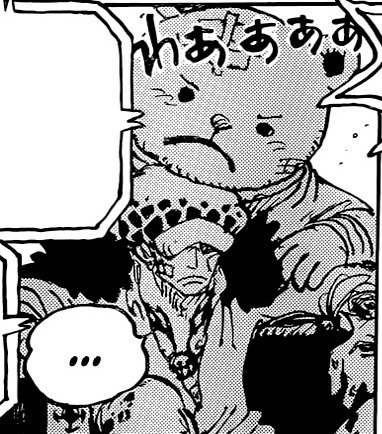
and noone bats an eye
this could never happen with a pair of human characters. let alone pair of male human characters.
#we could never see killer casually hang off of kidd no matter how much kidd calls him Partner#he's cute so its fine#foolish#i wont pretend that oda snuck them by all of you on purpose#nor will i admit myself into a mental hospital for NOTICING#because how dare i#bepo is not salome. he is not a pet. he is not one of those half-sentient animals on hancock's island#hes a full guy#law has a guy rest his chin on his head and his hand on his shoulders in a half hug#you are looking at it right now#one piece#lawbepo#positive gay rep
2K notes
·
View notes
Text


#conor browne#sars cov 2#public health is backsliding so bad it's insane#there are ppl being mocked and shamed by actual doctors and nurses for trying to protect themselves and others from getting sick/dying#“covid anxiety” “you gotta ~live your life~” that's what ppl are trying to do by NOT getting covid and spreading it around you stupid fucks#esp in HOSPITALS FULL OF ALREADY SICK PPL#fuck off!!!!!
1K notes
·
View notes
Text
You know what I really need in fanfics? More confession scenes where one person drops the confessions then runs, fast as fuck, in the other direction.
Like, obviously they’ll meet back up eventually and talk about it (which is hilarious in itself they they would have to sprint to catch up while yelling why they’re like this) , BUT THINK ABOUT IT!!! It 1) give the other person a chance to gather their thoughts so the person confessing doesn’t have to sit in anxious silence and 2) allows the confessor to get it over with quick and overcomes that anxiety over confessing. Also it’s just fucking hilarious.
Like imagine your fav paring or whatever, they get to that part where one (or both idk) realizes their feelings for the other but they’re just anxious to be vulnerable like that or they fear rejection, whatever. One of them suddenly goes, fuck it, and they turn to the other. (Maybe they’re on a sidewalk, maybe their in a park IDK endless possibilities here) and they go:
“ok I’m about to say something, it’s nothing bad (I hope) and I’m willing to talk about it after I say it. I’m 100% serious, this is really not a joke. But I’m going to say this and run to (relevant location). Ok? Ok…. Don’t freak out… iminlovewithyou” *Cue maniac SPRINTING as fast as humanly possible in the other direction* (Bro I’m cracking up just typing about this)
AND THEN!!! You get to chose how they react after a few stunned seconds. Do they sprint after them? Do they shout to bring their ass back over to them? Do they race like hell to beat the other at the determined location??? I don’t know, but it’s hilarious as fuck and can transition seamlessly into heartfelt feeling talk.
(Thinking about this with specific ships is funny as hell too)
Idk I think of more fics had this trope we could all have a grand ol silly time instead of accidentally speed reading through confession schemes because the stress is too much then having to go back and re-read it to fully process it, as one does. You know?
#am I about to expose myself on my ships?#yes. yes i am#hilson#this is especially funny if it’s fucking Wilson doing the confessing in the hospital hallway#ineffable husbands#homumiko#tedpendent#dreamling#johnlock#mattfoggy#stobotnik#shukita#the most randomest ships but it is what it is#i could definitely add more but we’d be here all day#fanfic#please please please writers im begging do this I’ll laugh my ass off#jk I’m adding more ships I think will be funny as I think of them#shassie#harrykim
1K notes
·
View notes
Text
au in which touya ends up having to watch natsuo put his hands all over you because you took something offered to you at a sketchy warehouse party that has you panting and whimpering and burning up and his own hot hands can't provide you any comfort but his little brother's cool-quirked touch can
#touya can't take you to the hospital because you took the pill willingly and he doesn't want you to get in trouble#and he feels so guilty because HE'S the one who brought you to the stupid party anyway#your apartment is too far away and your roommates already think touya's bad news so he doesn't want to give them another reason to hate him#so he drags you back to his house to try and help you ride out the high#and you're kneeling on the floor just inside the door to the todoroki home half-dressed because you keep trying to peel off your clothes#with touya pleading with you in a frantic whisper to just stand up and make the short walk to his bedroom without waking up his siblings#and a bleary eyed natsuo (still up and studying for a test he has the next day) finds you and his brother in the doorway#and natsuo doesn't understand why you're clinging to touya and behaving so strangely#but he does know that you sound pretty when you whimper like that#and that the way that the dim light in the corridor catches in the sheen of sweat on your exposed throat makes his chest feel tight#tw drug use
517 notes
·
View notes
Text
Everytime Batman and Red Hood see each other they end up shouting across the streets of Gotham emotional shit like JUST COME HOME SON and YOU'RE NOT IN CHARGE OF ME ANYMORE OLD MAN and it's just Not Subtle in the slightest
No one knows that Jason is an ex Robin so everyone comes to the very logical conclusion that the Red Hood is Batman's rebellious blood son that ran away from home to pursue a life of crime and they're not even fucking wrong
#dc#batfamily#batman#new villain in gotham: uhhh why is that crime lord not invited to the annual fuck batman party??#seasoned villain: that's batman's boy#they had a falling out over all the murder. real sad. he didnt even go home for christmas......#seasoned villain: anyone he'll probably end up crashing the party at 2am drunk off his ass and it's a toss up over whether he'll start#crying and make everyone uncomfortable#my posts#people trying to convince red hood to go home to the bats because maybe then batman will chill out for 5 seconds#when red hood didnt come home for christmas the whole city heard about kt#it#And batman was SCARY#more than normal#red hood PLEASE call your dad before he puts us in the hospital again
4K notes
·
View notes
Text
Ethan, after Benji has once again volunteered him for an insane death-defying stunt:
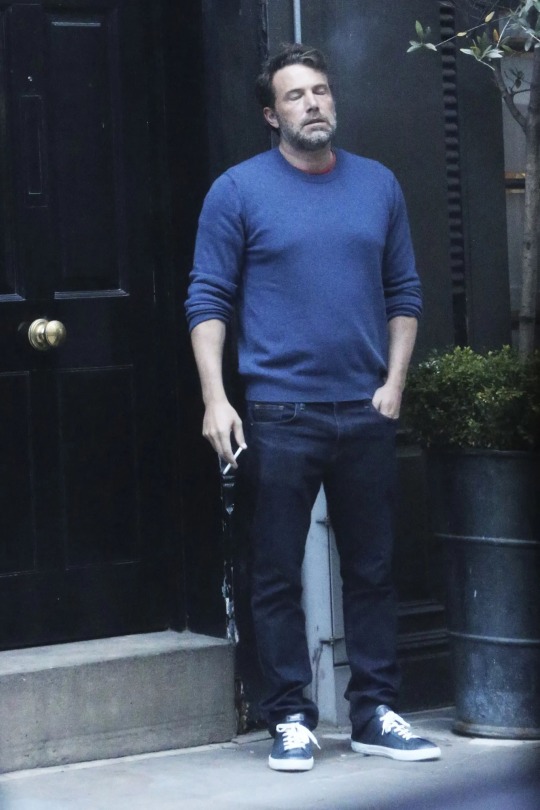
#when your husband believes in you so much…it nearly puts you in the hospital#i love the way they love#benthan#mission impossible#mission impossible dead reckoning#ethan hunt#benji dunn#tho ethan has no leg to stand on since his go-to move is something stupid and insane#thinking of when he buckled himself into a car then drove it off the top of a parking garage#or jumped onto a motorcycle AFTER crashing another car by driving recklessly
1K notes
·
View notes
Photo

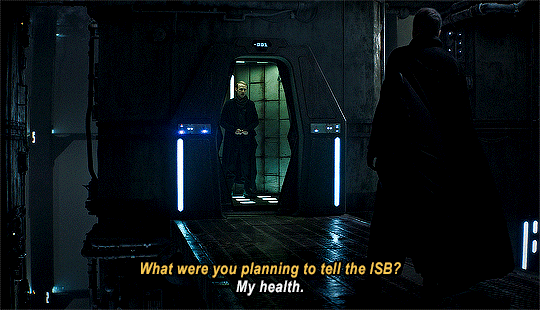
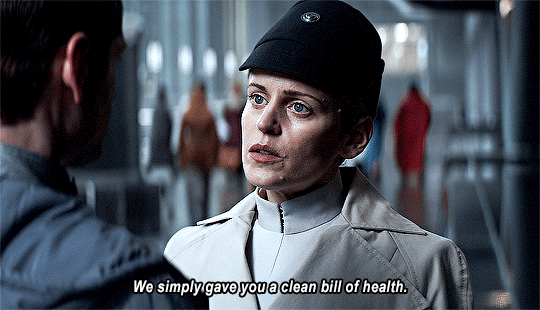


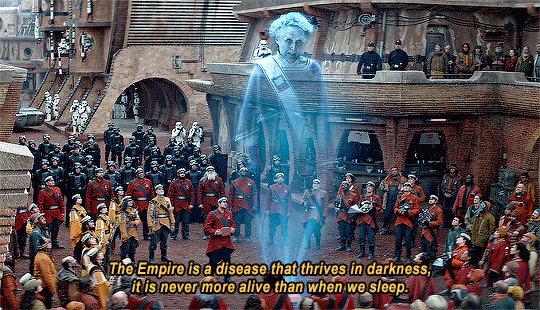
“There is a wound that won’t heal at the centre of the galaxy. There is a darkness reaching like rust into everything around us. We let it grow and now it’s here. It’s here, and it’s not visiting anymore.”
ANDOR - Health, disease and the Empire
#Star Wars#Andor#StarWarsEdit#AndorEdit#SWEdit#Major Partagaz#Maarva Andor#Dedra Meero#Lonni Jung#Doctor Rhasiv#gif#edit2#i feel like there's something missing but couldn't remember any other lines relating to this off the top of my head#anyways#something something about the isb building looking like a hospital#the stress of living a double life under the empire making lonni jung ill#maarva's health rapidly deteriorating after the empire occupies ferrix#syril getting 'clean bill of health' for his cooperation#and a real doctor who can't actually help anyone because a sentence to narkina 5 is really a sentence to death#the empire says it will cure the galaxy when it is actually the sickness itself#and anyone who rebels gets infected
2K notes
·
View notes
Text
hi lovelies, realized that i did not say it on here before, but i will say it now.
i’m gonna be MIA from this blog for one week. bisan from gaza has called for a worldwide strike from january 21-28 to show support for the palestinians during this horrific genocide. striking involves several things (which i will provide in pics below), including completely abstaining posting on social media unless it is about palestine.
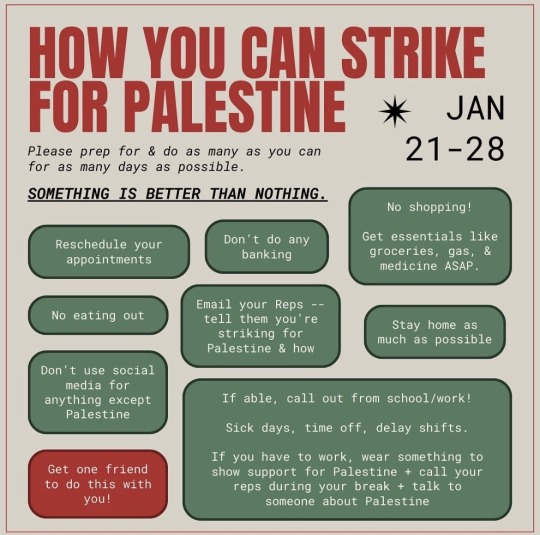
just in the last week, israel murdered over 1000 palestinians. there are no more fully-functioning hospitals in gaza, only 15 semi-functioning ones. the united states government itself has issued a statement saying that it does not believe in a ceasefire.
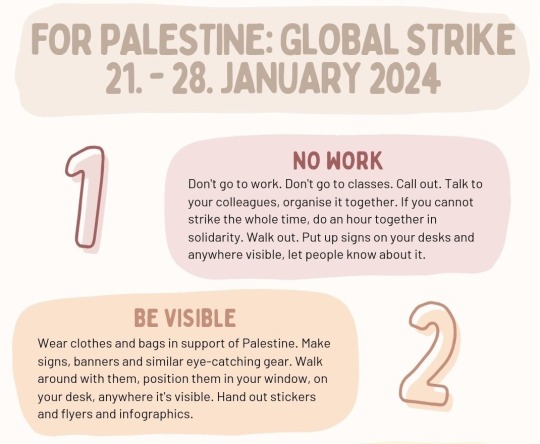



this is not war. this is not a conflict. this is an ethnic cleansing. this is genocide.
from the river to the sea, palestine will be free. 🇵🇸
#i can’t take time off work right now unfortunately because i quite literally can’t afford it#(especially after my recent time in the hospital)#so i’m doing every little bit that i can#i know this is tumblr and not instagram or twitter but it’s social media and it needs to be done#i’ll be working on my writing while i’m not posting on here but please focus on what’s more important rn#we don’t just want a ceasefire now#we want the end to israel’s terror#we want a free palestine#belle speaks
259 notes
·
View notes
Text
Film Grammar for Simmers
What is film grammar?
"Film grammar" refers the unstated "rules" of editing used in movies and TV. Different types of shots have different associations and are used by editors to convey different types of information to the audience. Many of these principles were first described in the early 20th century by Soviet directors, but they're used consistently across genre, medium, and even language: Bollywood musicals, English period dramas, Korean horror movies, and American action blockbusters all use many of the same techniques.
Because these rules are so universal, virtually everyone has some internalized understanding of them. Even if they can’t name the different types of shots or explain how editors use images to construct meaning, the average person can tell when the “rules” are being broken. If you’ve ever thought a movie or episode of TV was confusing without being able to say why, there’s a good chance that there was something off with the editing.
Learning and applying the basics of film grammar can give your story a slicker and more-polished feel, without having to download shaders or spend hours in photoshop. It also has the bonus of enhancing readability by allowing your audience to use their knowledge of film and TV to understand what's happening in your story. You can use it to call attention to significant plot details and avoid introducing confusion through unclear visual language.
Best of all, it doesn't cost a dime.
The basics: types of shots
Shots are the basic building block of film. In Sims storytelling, a single shot is analogous to a single screenshot. In film, different types of shots are distinguished by the position of the camera relative to the subject. There are three big categories of shots, with some variation: long shots (LS), medium shots (MS), and close-ups (CU). This diagram, created by Daniel Chandler and hosted on visual-memory.co.uk illustrates the difference:
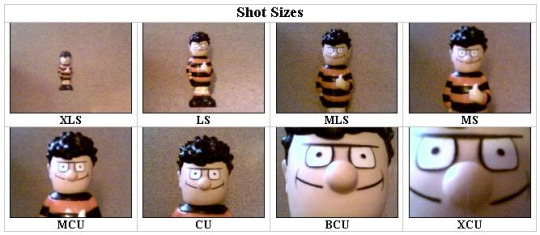
Source: The 'Grammar' of Television and Film, Daniel Chandler, visual-memory.co.uk. Link.
In film, scenes typically progress through the different types of shots in sequence: long shot, medium shot, close-up. When a new scene begins and the characters arrive in a new location, we typically begin with a wide establishing shot of the building’s exterior to show the audience where the scene will be taking place. Next comes a long shot of an interior space, which tells the where the characters are positioned relative to one another. The next shot is a medium shot of the characters conversing, and then finally, a close-up as the conversation reaches its emotional or informational climax. Insert shots are used judiciously throughout to establish themes or offer visual exposition.
Here's another visual guide to the different types of shots, illustrated with stills from Disney animated films.
This guide is almost 2,000 words long! To save your dash, I've put the meat of it under the cut.
Long shot and extreme long shots
A long shot (sometimes also called a wide shot) is one where the entire subject (usually a building, person, or group of people) is visible within the frame. The camera is positioned far away from the subject, prioritizing the details of the background over the details of the subject.
One of the most common uses of long shots and extreme long shots are establishing shots. An establishing shot is the first shot in a scene, and it sets the tone for the scene and is intended to give the viewer the information they’ll need to follow the scene: where a scene is taking place, who is in the scene, and where they are positioned in relation to one another. Without an establishing shot, a scene can feel ungrounded or “floaty.” Readers will have a harder time understanding what’s happening in the scene because on some level, they’ll be trying to puzzle out the answers to the who and where questions, distracting them from the most important questions: what is happening and why?
(I actually like to start my scenes with two establishing shots: an environmental shot focusing on the scenery, and then a second shot that establishes the characters and their position within the space.)
Long shots and extreme long shots have other uses, as well. Because the subject is small relative to their surroundings, they have an impersonal effect which can be used for comedy or tragedy.
In Fargo (1996) uses an extreme long shot to visually illustrate the main character’s sense of defeat after failing to secure funding for a business deal.The shot begins with a car in an empty parking lot, and then we see the protagonist make his way up from the bottom of the frame. He is alone in the shot, he is small, and the camera is positioned above him, looking down from a god-like perspective. All of these factors work together to convey his emotional state: he’s small, he’s alone, and in this moment, we are literally looking down on him. This shot effectively conveys how powerless he feels without any dialogue or even showing his face.
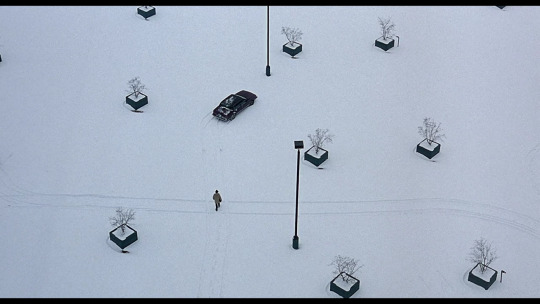
The same impersonal effect can also be used for comic purposes. If a character says something stupid or fails to impress other characters, cutting directly from a close-up to a long shot has a visual effect akin to chirping crickets. In this instance, a long shot serves as a visual “wait, what?” and invites the audience to laugh at the character rather than with them.
Medium Shots
Medium shots are “neutral” in filmmaking. Long shots and close-ups convey special meaning in their choice to focus on either the subject or the background, but a medium shot is balanced, giving equal focus to the character and their surroundings. In a medium shot, the character takes up 50% of the frame. They’re typically depicted from the waist-up and the audience can see both their face and hands, allowing the audience to see the character's facial expression and read their body-language, both important for interpreting meaning.
In most movies and TV shows, medium shots are the bread and butter of dialogue-heavy scenes, with close-ups, long shots, and inserts used for punctuation and emphasis. If you’re closely following the conventions of filmmaking, most of your dialogue scenes will be medium shots following the convention of shot-reverse shot:
youtube
To keep long conversations from feeling too visually monotonous, consider staging the scene as a walk-and-talk. Having two characters move through a space can add a lot of dynamism and visual interest to a scene that might otherwise feel boring or stiff.
Close Ups
Close-ups are close shots of a character’s face. The camera is positioned relatively near to the subject, showing just their head and shoulders. In a close-up, we don’t see any details of the background or the expressions of other characters.
In film, close-ups are used for emphasis. If a character is experiencing a strong emotion or delivering an important line of dialogue, a close-up underscores the importance of the moment by inviting the audience to focus only on the character and their emotion.
Close-ups don’t necessarily need to focus on the speaker. If the important thing about a line of dialogue is another character’s reaction to it, a close-up of the reaction is more effective than a close-up of the delivery.
One of the most iconic shots in Parasite (2019) is of the protagonist driving his employer around while she sits in the backseat, speaking on the phone. Even though she’s the one speaking, the details of her conversation matter less than the protagonist’s reaction to it. While she chatters obliviously in the background, we focus on the protagonist’s disgruntled, resentful response to her thoughtless words and behavior.

In my opinion, Simblr really overuses close-ups in dialogue. A lot of conversation scenes are framed entirely in close-ups, which has the same effect of highlighting an entire page in a textbook. The reader can’t actually tell what information is important, because the visuals are screaming that everything is important. Overusing close-ups also cuts the viewer off from the character’s body language and prevents them from learning anything about the character via their surroundings.
For example, a scene set in someone’s bedroom is a great opportunity for some subtle characterization—is it tidy or messy? what kind of decor have they chosen? do they have a gaming computer, a guitar, an overflowing bookshelf?—but if the author chooses to use only close-ups, we lose out on a chance to get to know the character via indirect means.
Inserts
An insert shot is when a shot of something other than a character’s face is inserted into a scene. Often, inserts are close-ups of a character’s hands or an object in the background. Insert shots can also be used to show us what a character is looking at or focusing on.
In rom-com The Prince & Me (2004) (see? I don’t just watch crime dramas…) the male lead is in an important meeting. We see him pick up a pen, look down at the papers in front of him, and apparently begin taking notes, but then we cut to an insert shot of his information packet. He’s doodling pictures of sports cars and is entirely disengaged from the conversation. Every other shot in the scene is an establishing shot or a medium shot or a close-up of someone speaking, but this insert gives us insight into the lead’s state of mind: he doesn’t want to be there and he isn’t paying attention.

Insert shots are, in my opinion, also used ineffectively on Simblr. A good insert gives us extra insight into what a character is thinking or focusing on, but a poorly-used insert feels…unfocused. A good insert might focus on pill bottles on a character’s desk to suggest a chemical dependency, on a family picture to suggest duty and loyalty, on a clock to suggest a time constraint, on a pile of dirty laundry or unanswered letters to suggest a character is struggling to keep up with their responsibilities. An ineffective insert shot might focus on the flowers in the background because they’re pretty, on a character’s hands because it seems artsy, on the place settings on a dining table because you spent forever placing each one individually and you’ll be damned if they don’t make it into the scene. These things might be lovely and they might break up a monotonous conversation and they might represent a lot of time and effort, but if they don’t contribute any meaning to a scene, consider cutting or repurposing them.
I want to emphasize: insert shots aren’t bad, but they should be carefully chosen to ensure they’re enhancing the meaning of the scene. Haphazard insert shots are distracting and can interfere with your reader’s ability to understand what is happening and why.
Putting it all together
One of the most basic principles of film theory is the Kuleshov effect, the idea that meaning in film comes from the interaction of two shots in sequence, and not from any single shot by itself. In the prototypical example, cutting from a close-up of a person’s neutral expression to a bowl of soup, children playing, or soldiers in a field suggests hunger, worry, or fear, respectively.
youtube
The Kuleshov effect is the essence of visual storytelling in a medium like Simblr. You can elevate your storytelling by thinking not only about each individual shot, but about the way they’ll interact and flow into one another.
Mastering the basics of film grammar is a great (free!) way to take your storytelling to the next level. To learn more, you can find tons of guides and explainers about film grammar for free online, and your local library doubtless has books that explain the same principles and offers additional analysis.
Happy simming!
#armorica tips#armorica ooc#i finally got off my ass to finish this guide which i started back in August right before I got extremely sick and ended up in the hospital#anyway....hope you enjoyed this post which was a veiled excuse for me to complain about how people overuse close-ups and inserts#and i can't tell what's happening in their stories ;fdsklsjadf;laksdf#Youtube
323 notes
·
View notes
Text
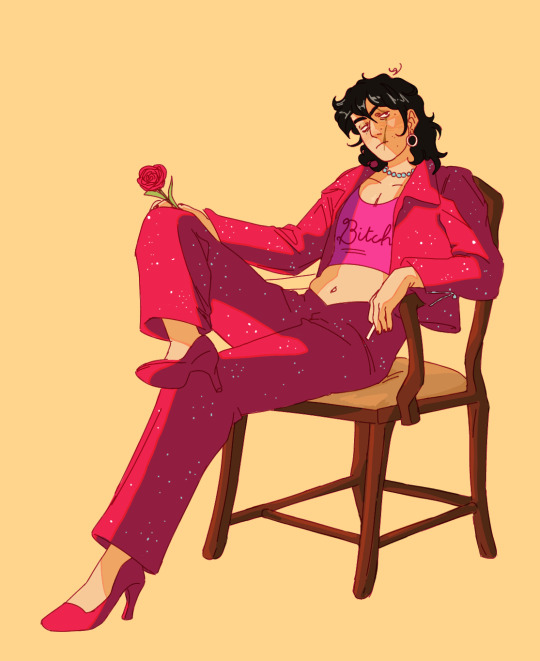
C!Q + vylette's fit from Jawbreaker
(aka an idea I've had for every conceivable holiday for months and decidedly couldn't put out on an appropriate date)
#i feel a little off posting this during such a time of distress but my own misery wont help others so I'm doing it anyway#also hi!!! I've been offline a lot but after much stress and a week being mildly mistreated at the hospital i finally know what's wrong!!#PM/SSc overlap syndrome you can look it up. they caught it early tho so none of my connective tissue is damaged#nor do i have any major systemic effects so yay. im taking meds for it and im praying for the best#anyway enough of my life hi folks this is the first thing ive drawn in MONTHS sry im rusty#sidenote in light of the tumblr panic never hesitate talking to me about anything I'd love it im just socially anxious#anyway i love yall hope yall enjoy <3 I'll leave yall now xoxo#my art#dsmp fanart#cquackity#fennec.art
270 notes
·
View notes
Text
@jegulus-microfic february 16, tear, 186 words
One of these days, their bickering is going to get one or both of them fired, but James can’t help it; ever since their first day as interns almost a year ago, James and Regulus have been at each other’s throats. Eventually one of them is going to snap and press the other up against a wall somewhere; in a hallway, in a supply cupboard, in an on-call room. Personally, James can’t wait.
“Are you guys, like, together?” Charles says, eyes flicking between them from where he’s laying on the emergency room bed.
“No,” Regulus replies at the same time James says, “Not yet.”
James watches fondly as Regulus rolls his eyes, insisting once again, “No.”
As soon as Regulus turns away to pull up his chart on the computer, James meets Charles’ eye and nods, the pair of them both hiding their smiles when Regulus turns back around.
“Charles, it looks like you have a tear in your deltoid muscle, which explains – what are you both grinning at?” Regulus sighs.
“Nothing. Right, Charles?” James says with a wink.
“Yeah, nope. Nothing at all, Dr Black.”
#i just know that when they do eventually snap#they're not gonna be able to keeps their hands or mouths off each other#getting caught making out in every corner of the hospital#jegulus#jegulus fic#marauders#sometimes i write things
175 notes
·
View notes
Text
constantly thinking abt how in Undertale the consequences for violence are immediate and lasting while in Deltarune you have to actively work to make violence "stick". like not that there's no neutral vs pacifist differences but the plot absolutely continues on as if nothing happened while Undertale a single death changes the entire ending and structure. the way a broken snowgrave run immediately reroutes everything back onto the rails. the quick dismissals and movings on. it just feels like the entire world is trying to avoid thinking about violence or assigning consequences unless forced to do so
#deltarune snowgrave#also ofc the fact that violence against darkners is treated as less real/meaningful#and all the fucked up implications of that#this is inspired by a reddit post i saw abt the childrens bead toy in the hospital#which remains the funniest source of Deeplore Info. this fuckin bead toy#but a bead only leaves the path if its broken off by force.
332 notes
·
View notes
Text

my personal favorite part of the will scene is when eddie puts his cleavage on display and looks at buck like this for some damn reason
#eddie diaz#911#sorry for this#every day of my LIFE i carve out some time to think quietly about eddie asking#someone to bring the v neck that best shows off his decolletage to the hospital for this conversation specifically
84 notes
·
View notes